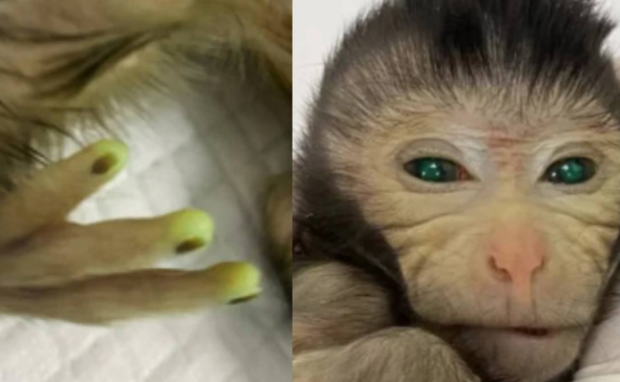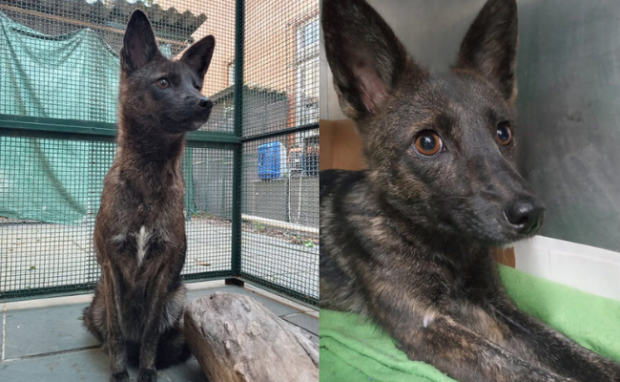Chinese scientists create chimera monkey with glowing fingertips
Chinese scientists announced the birth of a chimera monkey with shining green eyes and glowing yellow fingertips. It only lived for ten days, but the experts say it is a significant breakthrough for chimeric animal research. Soon, they believe it could help create accurate models for testing diseases and therapies.
Most may think we know everything there is to know about animals, but this research may uncover more mysteries. For example, it could help understand the early stages of stem cell differentiation in primates. Consequently, the research could help us understand this animal type more deeply. Moreover, scientists may create chimera animals that live longer.
This article will discuss how the Chinese researchers created a chimera monkey with unique glowing body parts. Later, I will elaborate on other unique animal discoveries.
How did researchers create a chimera monkey?

An animal “chimera” is a single organism consisting of cells that originate from more than two parents. The scientists used pluripotent stem cells, which can develop into differentiated ones, for their experiment.
They came from two genetically distinct fertilized eggs from the same monkey species to create a living, breathing, long-tailed macaque (Macaca fascicularis). Science Alert said this is not the world’s first monkey formed with such artificial means.
However, British and Chinese scientists said it was the most mixed or chimeric of them all. They took stem cell lines from a donor and a host embryo.
They discovered the creature received extra donated stem cells ranging from 21% to 92% after checking 26 distinct tissue types. Brain tissues had the highest percentage.
Previous studies resulted in liveborn and terminated monkey chimeric fetuses, with offspring containing low donor cell contributions to tissues between 0.1% and 4.5%. In contrast, the newest chimera monkey beat those stats.
Chinese Academy of Sciences geneticist Jing Cao claimed the study was a basic scientific advance. It proved for the first time that rich non-human primate chimeras are possible.
You may also like: BlueWalker 3 satellite outshines stars at night
“This is a long-sought goal in the field,” said CAS reproductive engineer and senior author Zhen Liu. “Specifically, this work could help us to generate more precise monkey models for studying neurological diseases as well as for other biomedicine studies.”
According to NDTV, Miguel Esteban, principal investigator at the Guangzhou Institute of Biomedicine and Health, said, “It is encouraging that our live birth monkey chimera had a big contribution (of stem cells) to the brain, suggesting that indeed this approach should be valuable for modeling neurodegenerative diseases.”
“Monkey chimeras also have potential enormous value for species conservation if they could be achieved between two types of nonhuman primate species, one of which is endangered.”
What are the latest animal discoveries?

There have been other cool animal discoveries besides the chimera monkey. For example, National Geographic discovered a dog-fox hybrid in Brazil.
NG named the female hybrid “Dogxim.” it is a portmanteau of “dog” and “graxaim do campo,” the Portuguese name for Pampas fox. Also, it illustrated its significance by explaining why dogs and foxes were distinct from each other.
Both belonged to the same biological family, Canidae. However, dogs belong to the smaller group or genus Canis, and foxes diverged into the Vulpes category. The Dogxim’s mother was a Pampas fox under the genus Lycalopex.
Biologist Roland Kays highlighted how unique this dog-fox cross is. “Generally, in mammals, species breed with their own kind. Sometimes, if they haven’t been separated by that long of an evolutionary time period, you can get different species breeding.
“We see this happen with coyotes and wolves, occasionally, but this tends to occur when one of the animals is very common in a region, and the other is very rare.”
You may also like: Meet Kanzi, the Minecraft gamer monkey
Rafael Kretschmer from the Universidade Federal de Pelotas shared ways a dog and a Pampas fox met and bred. First, Pampas foxes may have spread into domestic dog territory after losing their natural habitat to cattle ranches and human settlements.
Also, scientists found out that starfish are just giant heads. CNN said starfish had genetic signatures related to the development of a head. Senior study co-author Christopher Lowe and his research team used micro-computed tomography to analyze the animal’s shape and structure.
They discovered starfish somehow lost their bodies and became giant underwater heads. “Our research tells us the echinoderm body plan evolved in a more complex way than previously thought, and there is still much to learn about these intriguing creatures,” Thompson said.
Conclusion
Chinese scientists created a chimera monkey with glowing fingertips and eyes. It lasted only ten days, but they saw it as a significant breakthrough.
Soon, these experts could create a hybrid primate with a longer lifespan. Also, this research could help us understand this animal type more deeply.
Learn more about this chimeric monkey study on the Nature webpage. Moreover, check out more digital tips and trends and Inquirer Tech.